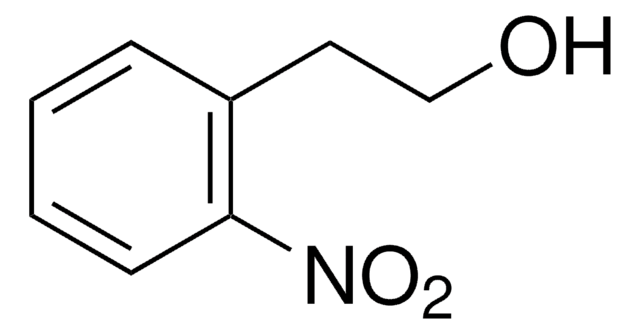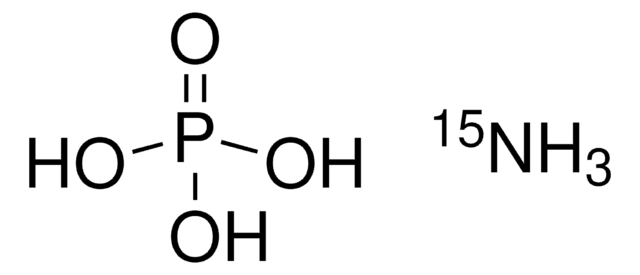204005
Dihydrogénophosphate d'ammonium
99.999% trace metals basis
Synonyme(s) :
Phosphate d'ammonium monobasique, Dihydrogénophosphate d’ammonium, Mono-ammonium phosphate, prim-phosphate d’ammonium
About This Item
Produits recommandés
Qualité
for analytical purposes
Essai
99.999% trace metals basis
Forme
crystalline
Impuretés
≤15.0 ppm Trace Metal Analysis
Pf
190 °C (dec.) (lit.)
Application(s)
battery manufacturing
Chaîne SMILES
N.OP(O)(O)=O
InChI
1S/H3N.H3O4P/c;1-5(2,3)4/h1H3;(H3,1,2,3,4)
Clé InChI
LFVGISIMTYGQHF-UHFFFAOYSA-N
Vous recherchez des produits similaires ? Visite Guide de comparaison des produits
Catégories apparentées
Description générale
Application
- As a precursor to fabricate cathode materials for Li-ion batteries to enhance cyclic performance.
- As an electrolyte additive in rechargeable batteries to enhance the ionic conductivity or to reduce the risk of side reactions within the electrolyte.
- To fabricate flame-retardant polymer composites.
Code de la classe de stockage
13 - Non Combustible Solids
Classe de danger pour l'eau (WGK)
WGK 1
Point d'éclair (°F)
Not applicable
Point d'éclair (°C)
Not applicable
Équipement de protection individuelle
Eyeshields, Gloves, type N95 (US)
Listes réglementaires
Les listes réglementaires sont principalement fournies pour les produits chimiques. Seules des informations limitées peuvent être fournies ici pour les produits non chimiques. L'absence d'indication signifie qu'aucun des composants n'est répertorié. Il incombe à l'utilisateur de s'assurer de l'utilisation sûre et légale du produit.
EU REACH Annex XVII (Restriction List)
Faites votre choix parmi les versions les plus récentes :
Déjà en possession de ce produit ?
Retrouvez la documentation relative aux produits que vous avez récemment achetés dans la Bibliothèque de documents.
Les clients ont également consulté
Notre équipe de scientifiques dispose d'une expérience dans tous les secteurs de la recherche, notamment en sciences de la vie, science des matériaux, synthèse chimique, chromatographie, analyse et dans de nombreux autres domaines..
Contacter notre Service technique





